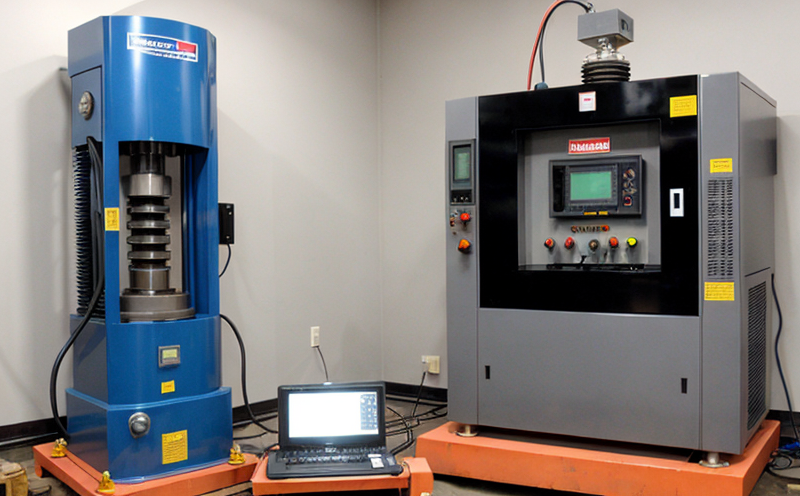MIL STD 202 Method 213 Shock Test for Components
The MIL STD 202 Method 213 shock test is a critical procedure used to evaluate the durability and resilience of electronic components under dynamic environmental conditions. This testing method, developed by the United States military, ensures that components can withstand the harsh operating environments they are likely to encounter in field use.
The MIL STD 202 Method 213 shock test is applicable to a wide range of electrical and electronic devices used in various sectors including aerospace, defense, automotive, and industrial electronics. The test simulates real-world shock events that could occur during transportation, handling, or deployment. This testing ensures the reliability and integrity of components under extreme conditions.
The test involves subjecting the component to a predetermined level of shock using a specific waveform profile defined by MIL STD 202 Method 213. The waveform is typically a half-sine pulse with a specified peak acceleration, duration, and rise time. The specimen must be prepared according to strict guidelines provided in the standard.
The test setup includes an impulse generator that delivers the shock stimulus to the component under test (CUT). The impulse is transmitted through a mounting fixture designed to isolate the CUT from external vibrations. The resulting acceleration response of the CUT is monitored using accelerometers placed at strategic locations on or around the specimen.
After the test, the performance of the component is evaluated based on predefined acceptance criteria specified in MIL STD 202 Method 213. These criteria include checks for mechanical integrity, electrical functionality, and visual inspections for physical damage.
The test procedure is designed to simulate various real-world shock events that a component might encounter during its lifecycle. This includes transportation via ground vehicles, aircraft, or ships, as well as handling in warehouses or on the production floor. The MIL STD 202 Method 213 shock test provides a standardized approach to ensure consistent results across different manufacturers and testing facilities.
Understanding the parameters of this method is essential for quality managers, compliance officers, R&D engineers, and procurement professionals who are involved in ensuring the reliability of electronic components. By adhering to MIL STD 202 Method 213, these professionals can ensure that their products meet stringent military standards and perform reliably under extreme conditions.
Scope and Methodology
| Parameter | Description |
|---|---|
| Shock Waveform | The test waveform is typically a half-sine pulse with a specified peak acceleration, duration, and rise time. |
| Impulse Generator | An impulse generator delivers the shock stimulus to the component under test (CUT). |
| Mounting Fixture | The mounting fixture isolates the CUT from external vibrations and ensures accurate response measurement. |
| Accelerometers | Accelerometers are used to monitor the resulting acceleration response of the CUT during testing. |
Benefits
The MIL STD 202 Method 213 shock test offers several benefits that are crucial for ensuring the reliability and durability of electronic components. By subjecting these components to simulated real-world shock events, manufacturers can identify potential weaknesses or design flaws early in the development process.
One of the primary advantages is enhanced product quality assurance. Components that pass this rigorous testing are more likely to perform reliably under harsh operating conditions, reducing the risk of failures during deployment. This leads to improved customer satisfaction and trust in the brand.
The test also aids in compliance with regulatory standards and industry best practices. By adhering to MIL STD 202 Method 213, manufacturers can ensure that their products meet stringent military specifications, which is particularly important for defense contractors. This can open up new market opportunities and enhance the company's reputation.
Additionally, the test helps in optimizing product design. Engineers gain valuable insights into how components behave under extreme conditions, allowing them to make informed decisions about material selection, component placement, and overall design improvements.
Why Choose This Test
- Predictable test results due to standardized procedures.
- Ensures compliance with MIL STD 202 Method 213 specifications.
- Identifies potential weaknesses early in the product lifecycle.
- Provides valuable design insights for future product improvements.
- Maintains consistent quality across different manufacturing batches.
- Reduces the risk of component failures during deployment.
- Supports regulatory compliance and industry best practices.





